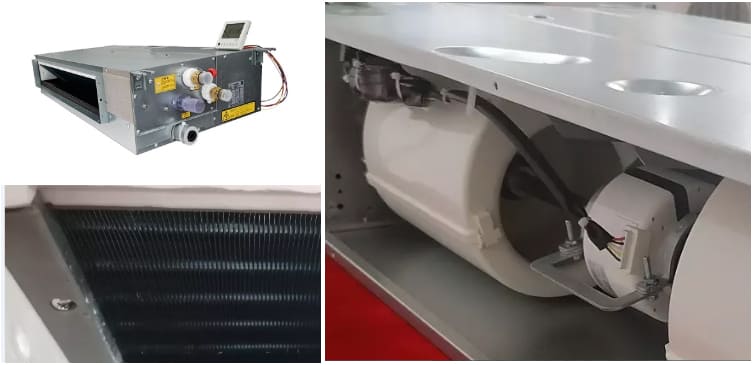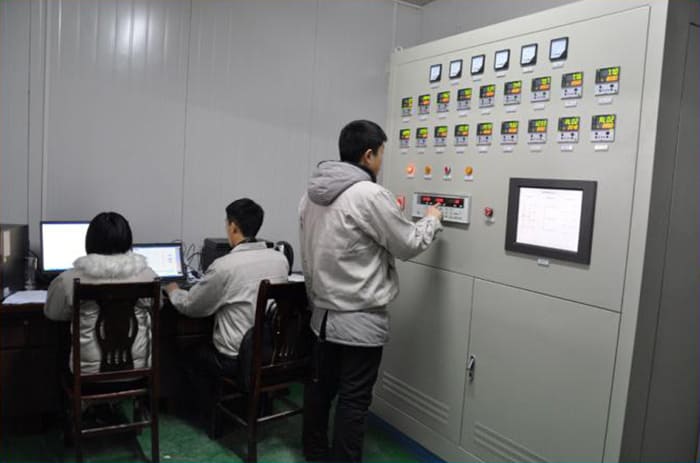Fan coil systems are used in many commercial buildings to provide heating and cooling to different parts of the building. They are often used with a central heating and cooling system to control localized temperature, which can be particularly useful in large buildings with varying occupancy levels.
However, fan coil systems can also be energy-intensive, leading to high energy bills and a negative environmental impact. Fortunately, there are several ways to optimize your fan coil system for energy efficiency, which can help to reduce your energy bills and minimize your carbon footprint.
Here we’ll explore some key ways to optimize your fan coil system for energy efficiency, including selecting the right equipment, optimizing the system design, and implementing effective maintenance and monitoring strategies.

1. Upgrade to High-Efficiency Fan Motors
The fan motor is one of the primary components of a fan coil system. Traditional fan motors consume a lot of energy and could be more efficient. Upgrading to high-efficiency fan motors can reduce energy consumption and improve system performance. High-efficiency fan motors use less energy and can improve airflow, resulting in better heating and cooling performance. For example, replacing a standard fan with a high-efficiency fan can reduce energy consumption by up to 50%.
2. Install Variable Speed Drives
Variable speed drives (VSDs) can be installed on fan coil systems to adjust the fan motor’s speed according to the cooling or heating requirements. VSDs can help to reduce energy consumption by up to 60% by adjusting the motor speed based on the load requirement. This means the fan motor only works as hard as it needs to, resulting in significant energy savings.
3. Use High-Efficiency Coils
The coils in a fan coil system transfer heat into or out of the air. High-efficiency coils can help improve the system’s heating and cooling performance while reducing energy consumption. High-efficiency coils have a larger surface area, allowing for better heat transfer and more efficient operation.
4. Optimize Fan Coil Placement
The placement of fan coils in a building can significantly impact the system’s efficiency. Fan coils should be placed in areas where they can provide optimal heating or cooling without having to work harder than necessary. For example, putting fan coils near windows can result in them working harder to cool or heat the air, resulting in higher energy consumption.
5. Use Programmable Thermostats
Programmable thermostats can be used to control the operation of the fan coil system according to the building’s heating and cooling requirements. They can be programmed to adjust the temperature based on the time of day or occupancy, which can help to reduce energy consumption. By setting the temperature to adjust automatically based on the occupancy of the building, the system can operate more efficiently without wasting energy.
6. Regular Maintenance
One of the most important things you can do to optimize your fan coil system for energy efficiency is to perform regular maintenance. Regular maintenance ensures that your system is running efficiently and effectively, which can help reduce energy consumption and lower your utility bills. Maintenance tasks should include the following:
- Cleaning or replacing air filters.
- Checking and adjusting belts.
- Lubricating motors and bearings.
- Inspecting coils for damage or leaks.
7. Upgrade to Energy-Efficient Controls
Energy-efficient controls can be used to optimize the performance of the fan coil system. These controls can help regulate the system’s operation and reduce energy consumption. For example, occupancy sensors can be used to detect when a room is unoccupied and adjust the system’s operation accordingly, reducing energy consumption.
8. Consider Retrofitting
If your current fan coil system is not energy efficient, retrofitting the system may be an option. Retrofitting involves upgrading the components of the system to improve efficiency and reduce energy consumption. Retrofitting can be a cost-effective solution for enhancing the performance of an existing design.
9. Use Thermal Insulation
Thermal insulation can be used to reduce heat loss or gain in a building, resulting in lower energy consumption. Proper insulation can help to keep the building warm in the winter and cool in the summer, reducing the need for heating or cooling from the fan coil system.
10. Use Natural Ventilation
Natural ventilation can also help optimize energy efficiency in your fan coil system. Opening windows or using ventilation fans can help circulate air and reduce the need for heating or cooling. Natural ventilation can also help improve indoor air quality by removing stale air and bringing in the fresh air.

Other factors:
Select the right equipment to optimize your fan coil system for energy efficiency. When choosing fan coil units, it’s essential to consider factors such as size, efficiency, and noise levels.
Size: Fan coil units come in different sizes to accommodate building sizes and heating and cooling loads. Choosing the suitable size fan coil unit is essential to ensure the team can provide adequate heating and cooling without wasting energy. Oversized fan coil units may result in efficient heating and cooling, while undersized units may need help maintaining a comfortable temperature.
Efficiency: Fan coil units can vary in efficiency, significantly impacting energy consumption and costs. Look for a high Energy Efficiency Ratio (EER) or Seasonal Energy Efficiency Ratio (SEER) rating for fan coil units. These ratings indicate the unit’s efficiency in converting electricity into heating or cooling, with higher ratings showing greater efficiency.
Noise levels: Fan coil units can be noisy, which can be a distraction for occupants and can also impact energy efficiency. Look for fan coil units that are designed to be quiet, with features such as vibration dampening, sound insulation, and low-noise fans.
Optimizing your fan coil system for energy efficiency can help reduce energy consumption and lower utility bills. Regular maintenance, upgrading to high-efficiency components, installing controls and sensors, using efficient fans and pumps, zoning, using natural ventilation, and adjusting usage patterns are all effective ways to improve energy efficiency. By implementing these strategies, you can ensure that your fan coil system is running at peak efficiency, which can help you save money and reduce your environmental impact.


